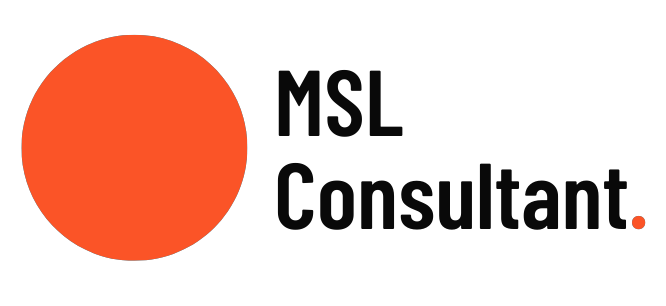How to plan for KOL meetings as a Medical Science Liaison (MSL)
Planning for KOL meetings is a very important and often overlooked function of the medical science liaison role.
Often MSLs are instructed to set up meetings with KOLs, but sometimes, particularly for newer MSLs, clear instructions are often lacking and MSLs may not be clear on the objective of the KOL meeting and what they should be talking about in the meeting. This can lead to frustration for the MSL (and the KOL) and meetings that don’t go as planned.
In this article, I share exactly what I’ve learned about planning for KOL meetings to ensure a successful outcome.
Step 1 – Identify the Objective of the KOL Relationship
The first step in planning for a KOL meeting is to identify the objective of the KOL relationship and how that objective aligns to the overall brand strategy. If you don’t know the overall brand strategy for the product you work on, speak to your medical manager and ask to see the medical plan.
You can also develop a relationship with the brand manager and understand what exactly the brand is trying to achieve. This is critical to the success of the MSL role, you must understand what the company is trying to achieve in order to add value to the company.
A very common strategic objective for a pharma company product is “is grow market share”. Although this is a commercial objective and the MSL is a non-promotional role, the MSL can still help the accompany achieve this objective by blending their strategic mindset with their scientific expertise and identifying non-promotional activities that are aligned to supporting the brand strategy.
Example:
The overall brand strategy for Drug X is to grow market share and one of the tactics that sits under that is to develop KOL advocates who will speak on behalf of the company.
The MSL can help with this because they can identify KOLs who are influential and if advocates of the brand, will be able to grow the market share by sharing their clinical experience with their peers.
Therefore, the overall objective of the KOL relationship would be to influence the KOL to present on behalf of the company and advocate for the use of Drug X in suitable patient populations.
Step 2 – Identify Individual Meeting Objectives
Step 2 of planning for KOL meetings is to work backwards from the overall KOL relationship objectives and identify the individual meeting objectives. Sticking with the example of developing a KOL advocate to speak on behalf of the company. An MSL can’t ask if the KOL wants to speak on behalf of the company on the first meeting, they need to lay the groundwork first.
Example:
KOL relationship objective: KOL advocate to speak on behalf of the company
1st meeting objective: Introduce the MSL and understand the challenges facing the KOL with management of certain conditions and organise another meeting with the KOL.
2nd meeting objective: Understand the KOLs clinical experience with Drug X.
3rd meeting objective: Present and discuss the first registration trial of Drug X and understand the KOLs thoughts on the data and how it aligns to their clinical experience.
4th meeting objective: Understand what motivates the KOL and what they are passionate about.
5th meeting objective: Leverage what motivates the KOL to highlight how speaking on behalf of the company would align with their passion and influence them to be a speaker.
Disclaimer: You might meet a KOL and in the first meeting they say;
“I love Drug X, I use it every day, I get a really good response from patients and it is well tolerated. I’d love to talk on behalf of your company”
and if that happens, amazing! And you can skip straight to meeting objective number 5.
Step 3 – Identify Questions & Research
Once you have identified the objective of each KOL meeting, the next step is to work backwards from your meeting objective and identify the questions you need to ask and the data/research you need to discuss in order to reach these objectives.
As an MSL, you want to start with open questions to get the KOL talking such as;
“how do you usually manage this disease?”
You can then use your research to develop points of discussion and frame additional questions.
“I follow you on twitter and I saw that last week that you posted about the new guidelines in the therapy area. In your opinion how will these guidelines affect clinical practice?”
After a number of open questions, you can start using closed questions to focus the conversation to your specific objective.
“ I’d love to hear about your clinical experience with Drug X. Can I organise another short meeting for next month and you can tell me about it?”
Summary
In order to plan effectively for KOL meeting you need to:
Step 1: Identify the objective of the KOL relationship and ensure it is strategically aligned to the overall brand plan
Step 2: Work backwards from the objective of the KOL relationship and identify the objective of each individual KOL meeting
Step 3: Develop questions and discussion points that will help you meet each KOL meeting objective
As an MSL, if you take the time and follow these steps to plan out your KOL meetings, you will get better insights and be able to deliver more strategically aligned value to your pharmaceutical company. This will ensure your efforts are clear to the company and when it comes to going for a promotion or applying for another MSL job, you will have clear evidence of the value you provide.
If you are an MSL and you need help with asking questions for KOL meetings, contact info@mslconsultant.com to enquire about 1:1 training.
